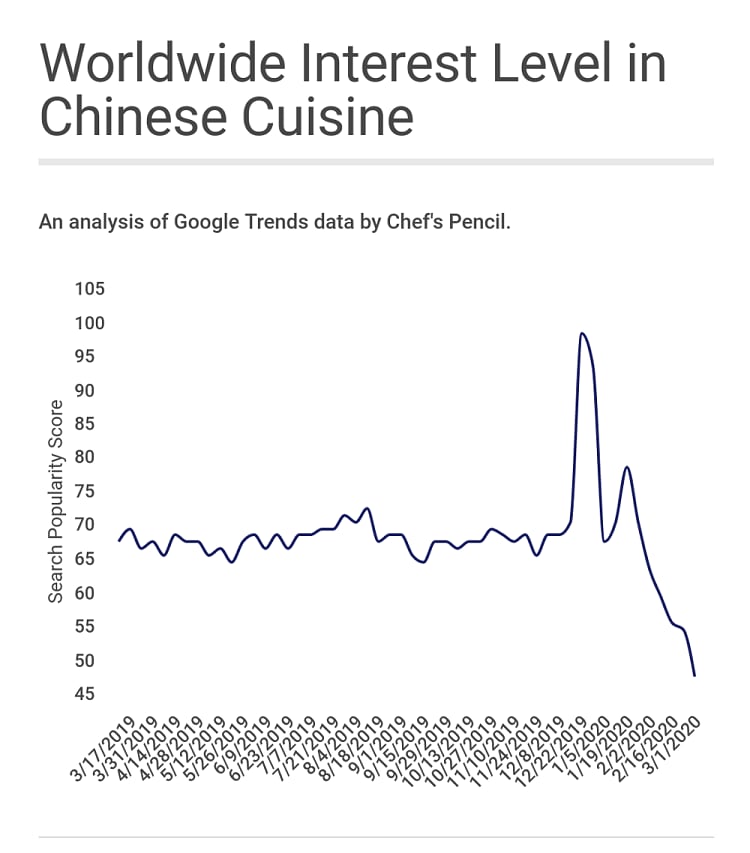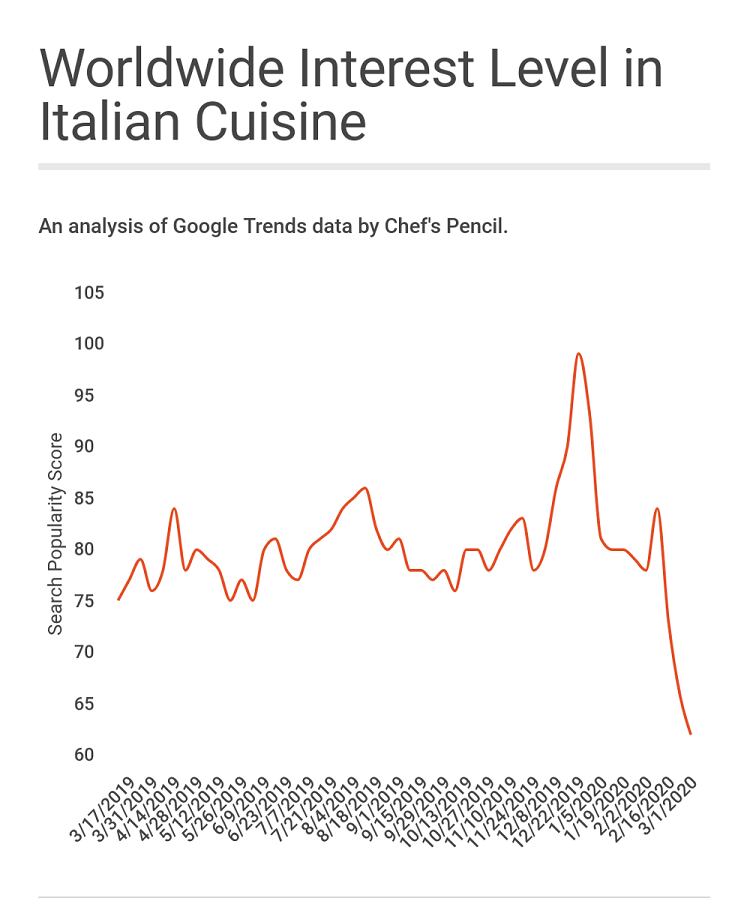In recent times, Chinese and Italian cuisine have been two of the most popular in the Western world.
According to recipe and culinary trends site Chef’s Pencil, Chinese (think spring rolls, dumplings and fried rice) and Italian (which champions pizza, pasta and risotto) feature in Australia, Canada, the US, the UK, and Ireland’s top five choices for international cuisine.
Indeed, Chinese is the most popular international cuisine in Canada, the US, UK and Ireland, and the second most popular in Australia beyond Thai.
Interest in Chinese, which has been the ‘undisputed ethnic food champion’ among these countries, is plummeting, however. And according to Chef’s Pencil, Italian cuisine is not far behind.
Interest in Chinese food drops 33%, Italian by 24%
Chef’s Pencil analysed Google Trends data, which uses artificial intelligence (AI) to categories search terms, for both cuisines.
To measure interest in Chinese cuisine, for example, Google monitors searches related to topics such as ‘Chinese restaurants’, ‘Chinese delivery’, 'Chinese food’, ‘Chinese rice’, or names of well-known Chinese restaurants. A score is then allocated to that cuisine to indicate its level of interest.
Comparing Google Trends data last week – when China’s COV-19 case count stood at approximately 80,711 with 3,045 reported deaths (as of 6 March) – to the average for January, demonstrated a steep decline in interest.

Overall, interest has dropped on average 33% globally. In the US, interest dropped 17%, Canada 22% and Australia 23%. In Spain, interest plummeted 73% and in Japan 96%.
“This means far fewer people are searching for Chinese restaurants, Chinese takeaways or for Chinese foods that can be bought in grocery shops,” noted Chef’s Pencil in the report.
Italian cuisine also took a nosedive concerning global consumer interest last week. On Friday 6 March, the country had reported 3,858 cases of novel coronavirus and 148 deaths.
Interest in the cuisine dropped by 24%. Nationwide, the UK saw a 10% reduction, 13% in the US, 25% in France, and 43% in Spain. Similarly to Chinese cuisine, interest dropped in Japan by 96%.
“Fewer people, especially in the UK, France and Spain, are searching locally for Italian restaurants and Italian foods. Google Trends data is usually well linked to consumer purchasing decisions, so it may mean slower business for local Italian restaurants and shops selling Italian produce,” noted Chef’s Pencil.
“On the bright side, in some European countries like Germany and Switzerland the trend has not yet caught on.”
Why? Can COV-19 be transmitted via food?

Such findings may be influenced by a variety of factors. According to Chef’s Pencil, it is possible that consumers fear restaurant employees have recently visited their homeland and contracted the virus.
Alternatively, consumers may believe the virus is present in the food products themselves.
Yet just this week, the European Food Safety Authority (EFSA) put such concerns to rest, confirming there have not been any reports of transmission through food. Rather, the virus is spreading from person to person mainly via respiratory droplets that people sneeze, cough, or exhale.
“Experiences from previous outbreaks of related coronaviruses, such as severe acute respiratory syndrome coronavirus (SARS-CoV) and Middle East respiratory syndrome coronavirus (MERS-CoV), show that transmission through food consumption did not occur,” noted EFSA’s chief scientist Marta Hugas.
“At the moment, there is no evidence to suggest that coronavirus is any different in this respect.”





